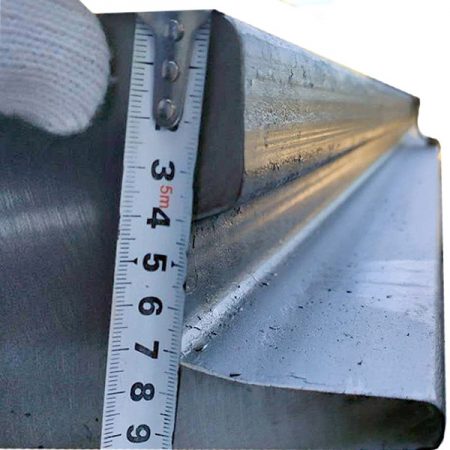The application of AREMA standard TR57 railway steel rail is widespread in heavy-duty railway projects due to its exceptional durability and load-bearing capacity. Specifically designed for use in mainline tracks where heavy freight trains frequently pass, TR57 rail provides reliable performance and long-term cost savings. The “TR57” designation refers to the rail’s weight per yard, which is approximately 115 pounds.
One significant advantage of TR57 rail is its superior resistance to wear and tear. This characteristic ensures an extended service life for the rail, reducing the need for frequent replacements and resulting in lower maintenance costs over time. Additionally, TR57 rail exhibits excellent load-bearing capabilities, enabling it to handle heavier loads compared to certain other rail types. This feature proves advantageous in various railway applications that require the transportation of substantial cargo.
The manufacturing process of TR57 rail typically involves hot rolling and heat treatment techniques. Quality control measures are rigorously implemented throughout production to guarantee that the rail adheres to specific performance and safety standards. TR57 rail generally complies with internationally recognized safety and performance specifications, including those set by AREMA and ASTM.
Maintenance requirements for TR57 rail may vary depending on factors such as the specific railway application and environmental conditions. Regular inspection and maintenance of the rail are essential to ensure its continued good condition. Typical issues associated with maintaining TR57 rail include fatigue cracking, rail wear, and joint failure. Prompt detection and appropriate intervention can mitigate these challenges and preserve the rail’s performance.
Successful applications of TR57 rail can be observed in diverse railway settings, including mainline tracks, heavy haul lines, and transit systems. These implementations exhibit efficient operation, low maintenance costs, and reliable performance over an extended period. The versatility of TR57 rail makes it a favorable choice for a wide range of railway projects.
In conclusion, the AREMA standard TR57 railway steel rail stands out for its remarkable durability, load-bearing capacity, and resistance to wear and tear. Its application is well-suited for heavy-duty railway projects, providing longevity, cost savings, and reliable performance. Through meticulous manufacturing processes and adherence to international standards, TR57 rail ensures safety and precision. Regular maintenance is crucial for preserving its condition, addressing common issues promptly. Overall, TR57 rail is a reliable and effective solution for numerous railway applications.
We can supply the international standard flat bottom rails as below:
If you need anyone, please feel free to contact us.





